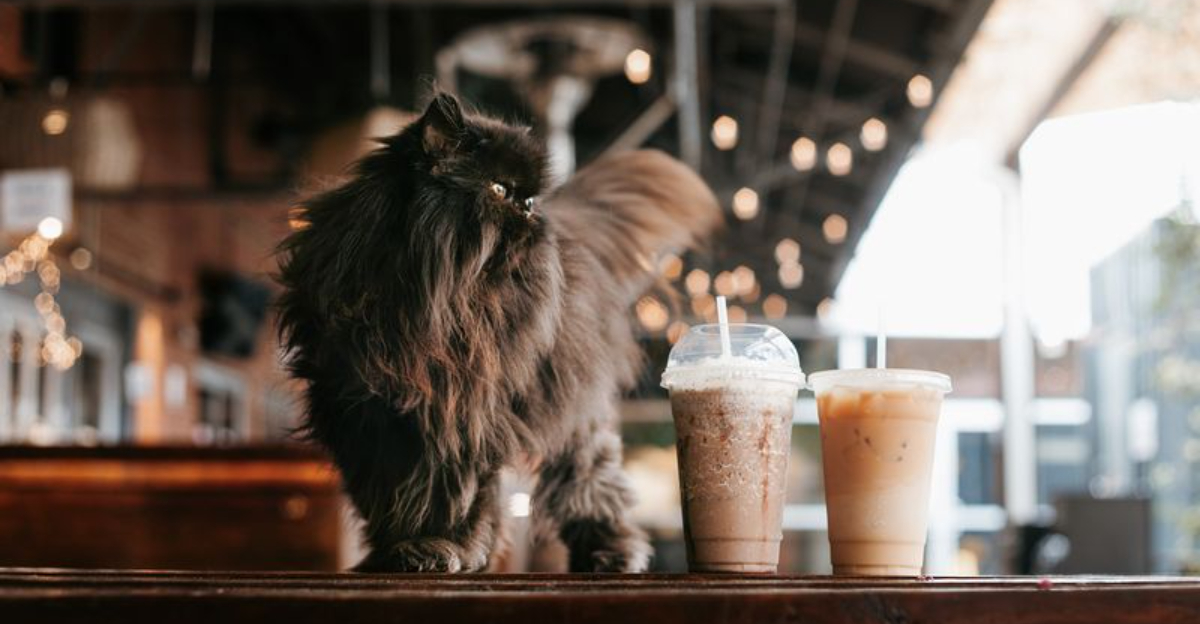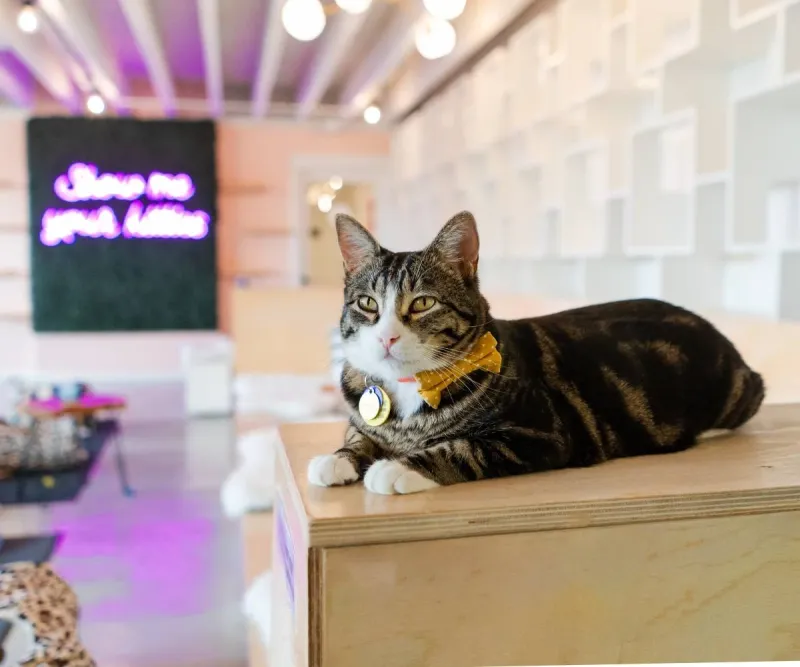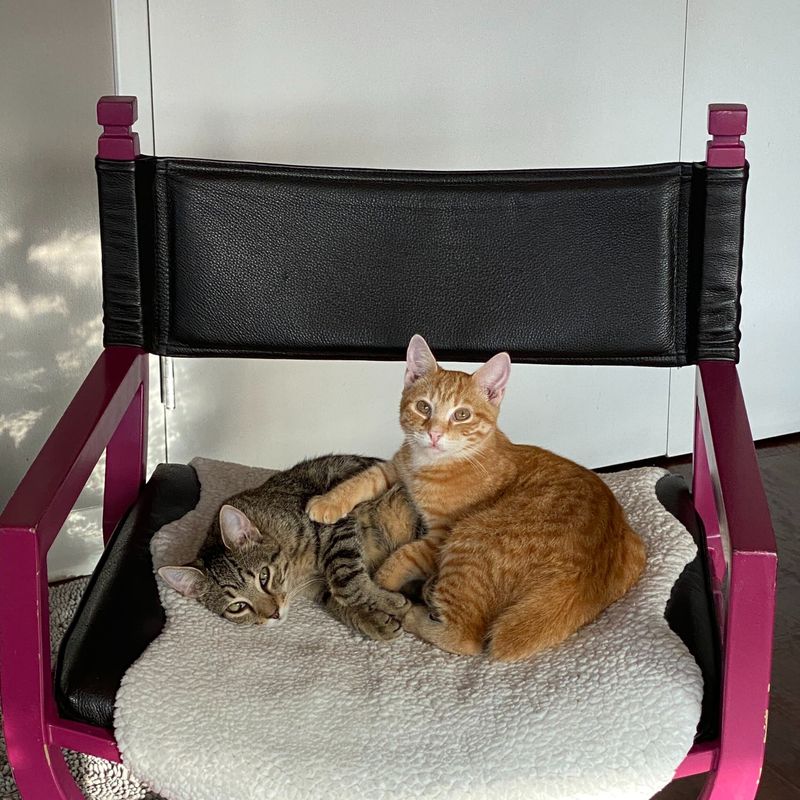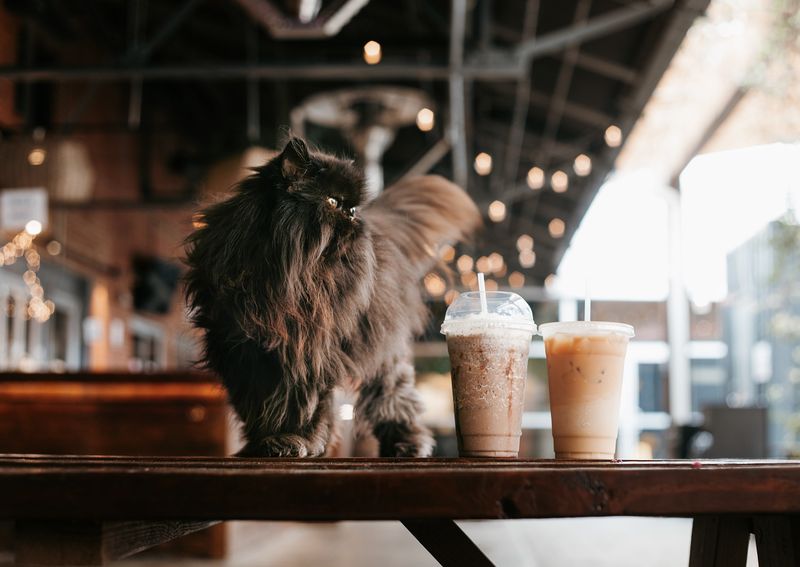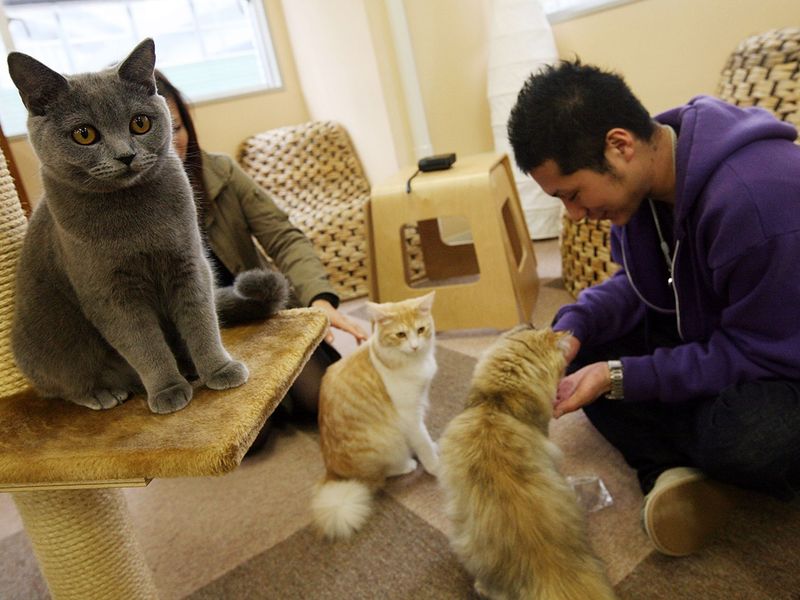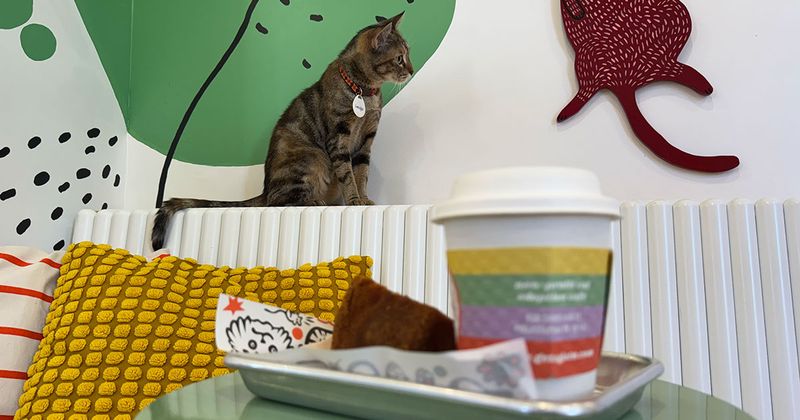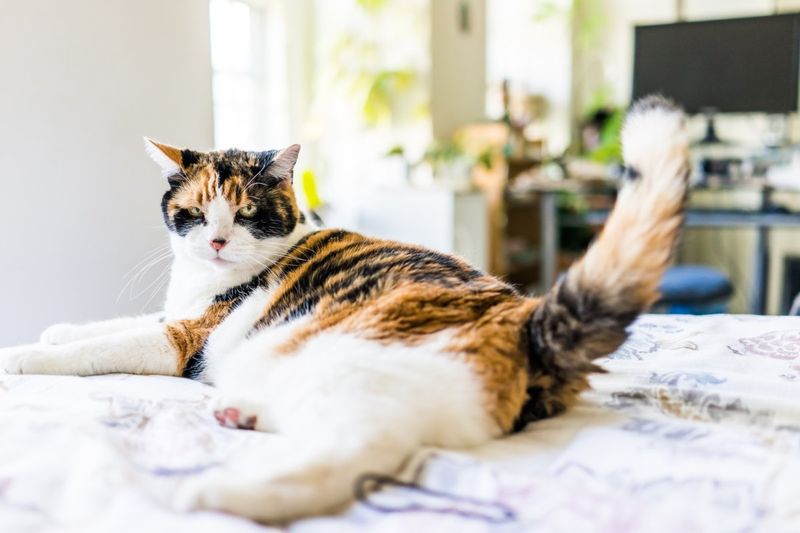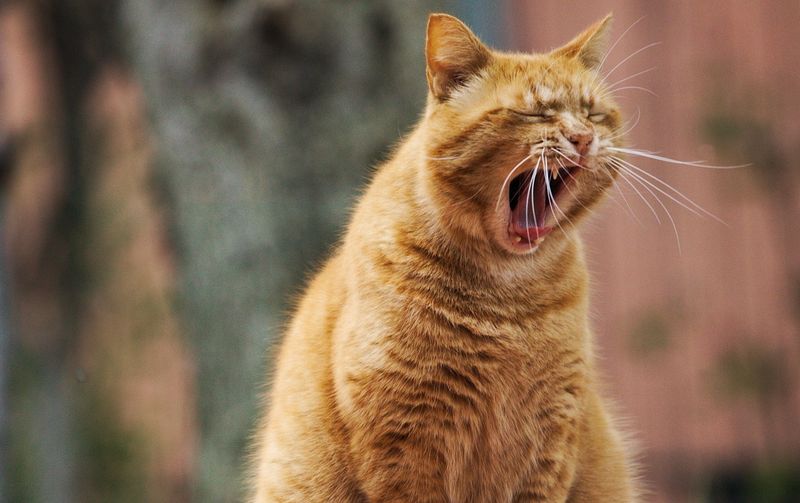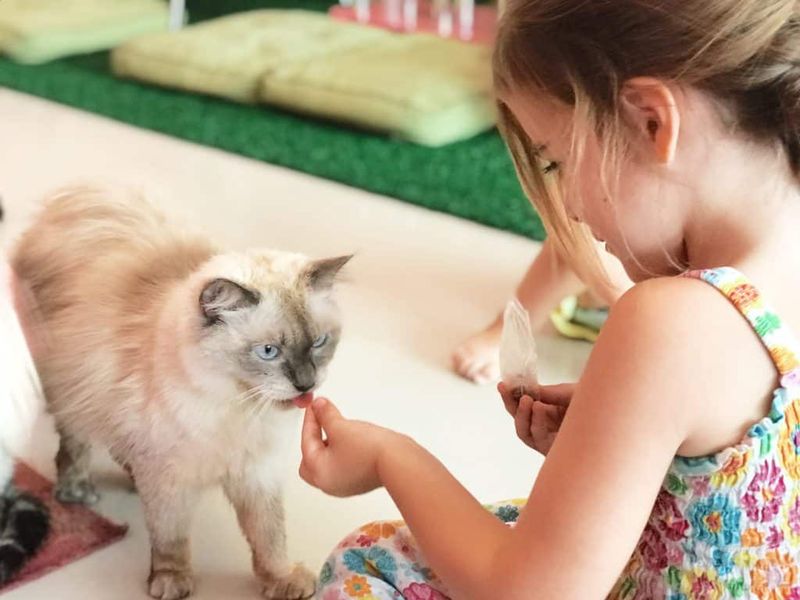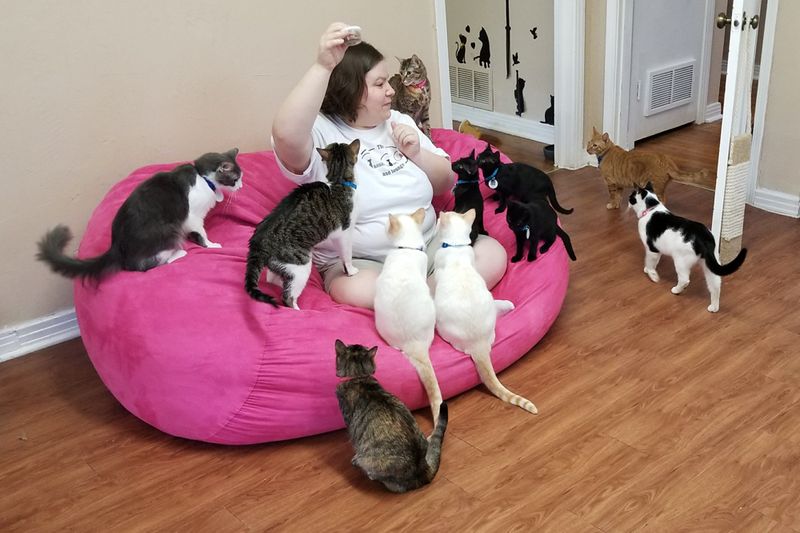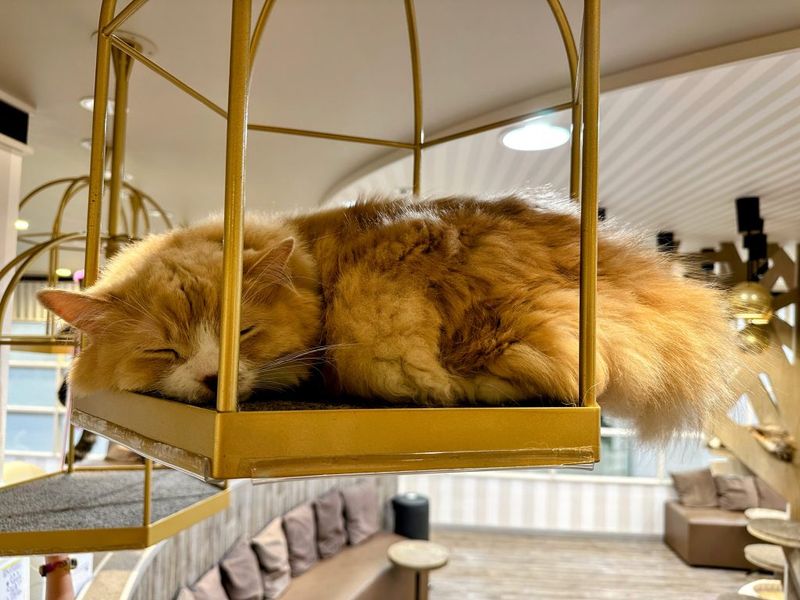📖 Table of Content:
- 1. “I Never Asked to Be Touched by Strangers All Day.”
- 2. “There’s Nowhere Truly Quiet to Hide.”
- 3. “Your Coffee Smells Stress Me Out.”
- 4. “I’m Not a Therapy Tool.”
- 5. “I Live in a Shop, Not a Home.”
- 6. “People Don’t Read My Body Language.”
- 7. “Every Day Is a Meet-and-Greet, and It’s Exhausting.”
- 8. “The Constant Turnover of Cats Is Confusing and Stressful.”
- 9. “Kids Don’t Follow the Rules.”
- 10. “Photos and Selfies Make Me Nervous.”
- 11. “I Have to Share Territory with Way Too Many Cats.”
- 12. “I Deserve More Than to Be a Gimmick.”
Cat cafés have popped up in cities around the world, charming visitors with the promise of cuddles, coffee, and purring companionship. They’re seen as a cozy blend of animal rescue and novelty experience, drawing cat lovers eager to sip lattes while petting fluffy felines lounging on café furniture. For humans, it all seems like a win-win — but the question that often gets overlooked is how the cats themselves actually feel about this setup.
Beneath the cute aesthetics and Instagram-friendly vibes lies a more complex reality. Many of the cats living in cafés are constantly exposed to crowds, loud noises, unfamiliar scents, and a rotating door of people expecting affection. While some felines may adapt or even thrive in social environments, others silently endure chronic stress, overstimulation, and limited privacy — things that can seriously affect their well-being over time.
So what if we flipped the narrative and gave the cats a voice? You might be surprised by what your favorite café companion would really say if they could speak their mind.
1. “I Never Asked to Be Touched by Strangers All Day.”
In many cat cafés, customer interaction is encouraged — even expected. Unfortunately, this often translates to a near-constant stream of people reaching for cats without understanding their individual boundaries. While some cats enjoy affection, others prefer minimal handling or need to initiate contact on their own terms. Repeated unsolicited touch can create anxiety or lead to defensive behaviors like swatting or hiding. Not every guest reads feline body language correctly, which increases the risk of stress and injury. Cats forced into frequent physical contact may begin to associate humans with discomfort. Over time, this can damage their trust and even change their behavior permanently.
2. “There’s Nowhere Truly Quiet to Hide.”
Noise levels in cat cafés are typically higher than in private homes. Between the hum of coffee machines, chatter from guests, and the occasional shriek of excitement, the environment can be overstimulating. Cats are naturally sensitive to sound and often seek silence to self-regulate. Though most cafés provide hideaways, they’re not always fully private or quiet. If a cat can’t find a true retreat, stress accumulates over time. Chronic exposure to stimulation without adequate recovery spaces may lead to behavioral issues. A peaceful, quiet refuge is not just a luxury — it’s a necessity for feline mental health.
3. “Your Coffee Smells Stress Me Out.”
Scent plays a massive role in a cat’s sense of safety. The strong aromas of espresso, flavored syrups, baked goods, and perfumes from guests can overwhelm a cat’s keen nose. Although these smells are pleasant to humans, they can interfere with a cat’s natural scent mapping and even cause aversion or agitation. Odors cling to surfaces and linger, creating an environment that constantly smells foreign or inconsistent. Cats use scent cues to establish territory and comfort zones — which cafés inadvertently disrupt. This ongoing interference may result in a lack of environmental security. A stressed cat often becomes withdrawn or defensive in response.
4. “I’m Not a Therapy Tool.”
The emotional needs of visitors often take center stage in cat cafés. Many people enter these spaces looking for comfort, calm, or healing through animal interaction. However, this can unintentionally place emotional burdens on the cats present. Unlike certified therapy animals, most café cats aren’t trained or temperamentally suited for this role. When people expect cats to offer comfort on demand, they ignore the animal’s agency. Over time, this pressure can create resentment or behavioral regression. Emotional labor shouldn’t be extracted from cats simply because they’re cute and quiet.
5. “I Live in a Shop, Not a Home.”
A café, by design, is a commercial space. It’s built to attract foot traffic, boost sales, and generate social media appeal. While many cafés adopt cats from shelters and aim to help them get rehomed, the environment itself isn’t a substitute for a stable household. Staff turnover, frequent visitors, and business hours create a routine focused on profit — not feline comfort. The temporary, transitional nature of café living doesn’t provide consistent bonding or deep attachment. For cats, this can feel disorienting or impersonal. A true home offers predictability, quiet, and one-on-one affection — all things cafés struggle to replicate.
6. “People Don’t Read My Body Language.”
Cats communicate primarily through subtle body signals, like tail flicks, ear movements, and pupil dilation. Unfortunately, many café visitors are unfamiliar with these cues. Misreading them often results in petting when the cat is overstimulated or attempting to retreat. This breakdown in communication increases the likelihood of scratches or bites, which are preventable with proper understanding. Even well-meaning guests can create stressful encounters by ignoring warning signs. Over time, repeated violations of their boundaries can cause cats to become more reactive. Proper education for visitors should be a priority in any space housing live animals.
7. “Every Day Is a Meet-and-Greet, and It’s Exhausting.”
Cats are creatures of habit and often prefer a set routine. In cat cafés, the guest list changes daily — sometimes hourly — making every day unpredictable. That means constant adaptation to new voices, scents, and energy levels. Even sociable cats can experience fatigue from non-stop interaction. Unlike traditional homes, cafés don’t allow for long, uninterrupted stretches of solitude. When overstimulated, cats may act out or withdraw completely. Lack of consistency in their social environment takes a mental toll over time.
8. “The Constant Turnover of Cats Is Confusing and Stressful.”
Cat cafés frequently cycle animals in and out, especially when operating as adoption hubs. While this is positive for rehoming, it disrupts the social dynamics among cats. New arrivals must establish territory and hierarchy, which can lead to tension or conflict. Frequent change prevents cats from forming stable social bonds. For territorial animals, this shifting environment can feel unsafe. It also makes it harder to assess long-term compatibility or behavior. Consistency among feline residents is just as important as socialization with people.
9. “Kids Don’t Follow the Rules.”
Many cat cafés welcome families, which introduces a unique challenge: young children who don’t understand boundaries. Even with signs and instructions, kids often behave unpredictably — chasing, yelling, or grabbing at cats. This behavior causes stress, especially for shy or older animals. Staff can’t always supervise every interaction, meaning some rule-breaking goes unchecked. Negative experiences with children may lead cats to fear all younger humans. In extreme cases, it may even result in defensive or aggressive behaviors. Not every cat is suited for a high-energy environment with unpredictable guests.
10. “Photos and Selfies Make Me Nervous.”
Social media is a major driver of cat café popularity. Guests often bring cameras or smartphones, eager to capture the perfect shot. Flashes, sudden movements, and being picked up for photos can overwhelm or frighten cats. Some may freeze or hide entirely to avoid attention. The desire to document moments sometimes outweighs consideration for the animals involved. Without strict guidelines, cats are treated more like props than sentient companions. Constant camera attention can lead to chronic stress if left unchecked.
11. “I Have to Share Territory with Way Too Many Cats.”
Space is critical in multi-cat environments. When too many cats share a limited area — which is often the case in cafés — competition for resources becomes a problem. Food stations, litter boxes, and resting spots can turn into battlegrounds. Even cats who seem tolerant may feel chronically uneasy. Behavioral signs like urine marking, hissing, or over-grooming may go unnoticed in public settings. Crowding increases the risk of illness, aggression, and psychological stress. Proper spacing and environmental enrichment are essential for group harmony.
12. “I Deserve More Than to Be a Gimmick.”
The cat café trend is undeniably marketable. Quirky themes, latte art, and feline mascots turn pets into branding tools. While some establishments prioritize animal welfare, others focus more on aesthetic than ethics. Treating cats as décor or entertainment undermines their autonomy and dignity. Many visitors see cafés as a novelty experience rather than a chance to connect respectfully with animals. This mindset can lead to exploitative or careless behavior. Above all, cats should be valued as sentient beings — not as photo ops or mood boosters.
